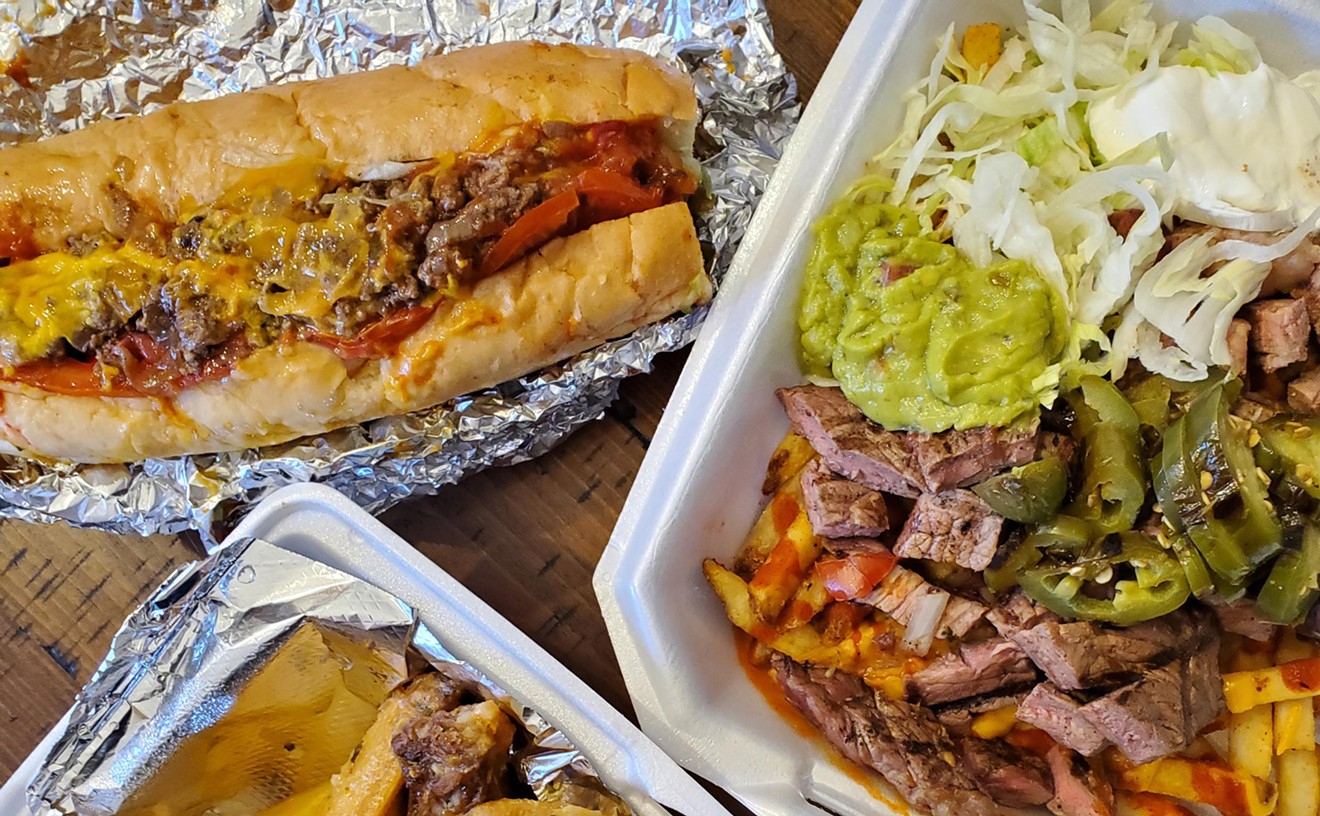Here's how Cummings makes sriracha, in photos:
Maybe so, but most spots are serving up the same packaged version of the Thai hot sauce -- you know, the one with the rooster on the bottle. Cummings and his team, on the other hand, are making their own, without the preservatives or xantham gum. The blend is just garlic, vinegar, sugar, salt, Fresno chiles, habanero peppers -- which are coming from sous chef Dianne Snider's garden -- and a little cornstarch, used for thickening at the end. The result? A sriracha that's a little more tart than the bottle version, but with a spicy kick that works with a variety of Row 14's dishes (though the sauce is made specifically for the Korean short ribs).
Cummings makes his own black garlic, dehydrating bulbs for forty days. When they're finished, the outside looks a little like it's been roasted -- but the cloves are black, sticky and candy-like, not unlike black licorice. The chef uses four kinds of garlic in his sauce: the black garlic plus raw garlic, roasted garlic and garlic powder. The red color of the sauce comes from Fresno chiles, which also provide much of the heat. The garlic and peppers and vinegar go into the food processor until they're a finely chopped blend.Recipe continues on Page 2
Cummings stores that mixture for a week, and it takes on a slightly fermented note. Then he busts it out of the refrigerator and puts it in a blender, where he pulverizes it. Finally, he pours the sauce that's been through a blender into a strainer to get the pulp out...and the result is what goes to the tables.









